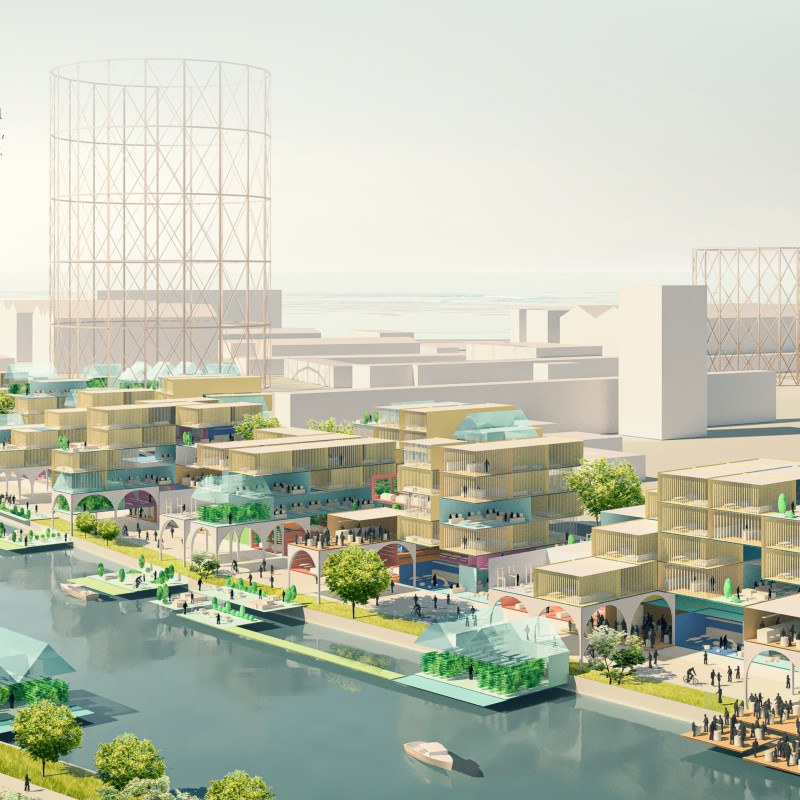5 key facts about this project
Co-Blocks functions as a robust model for collective housing, steering away from traditional residential designs that separate living from social interaction. Instead, the architecture promotes a dense yet open configuration, facilitating a vibrant neighborhood atmosphere that encourages collaboration and socialization. The project incorporates diverse spaces such as residential units, communal gathering areas, markets, workshops, and educational facilities, all seamlessly interwoven into a cohesive living environment. This integration of spaces not only enhances the functionality of the design but also nurtures a sense of belonging among residents, turning the concept of home into a communal experience.
The architectural design employs an array of materials that reflect both sustainability and aesthetic appeal. Lightweight steel, glass, timber, and sustainable composites have been thoughtfully selected to create a multifunctional structure that is not only visually appealing but also environmentally responsible. These materials contribute to the project’s adaptability, allowing for variations in spatial layout and use, thereby accommodating the dynamic nature of the community’s needs.
Key components of the design include a network of pedestrian pathways and green spaces that link the various parts of the Co-Blocks development. This emphasis on connectivity encourages residents to engage with each other and with their immediate environment, enhancing both mobility and accessibility. The interplay between indoor and outdoor areas is a fundamental design approach that fosters interaction, allowing residents to easily shift from private living quarters to public social spaces. The careful arrangement of these elements signifies a commitment to holistic urban living where architecture acts as a catalyst for community dynamics.
A significant aspect of Co-Blocks is its dedication to sustainability. The design features eco-friendly systems such as rain gardens and community gardens, which not only manage stormwater but also promote local biodiversity. This ecological sensitivity is paired with efficient energy use strategies, ensuring that the project is aligned with contemporary environmental standards and contributes positively to the urban landscape.
Moreover, the location along the Tiber River is not merely contextual; it shapes the project conceptually, serving as a bridge between historical and modern elements. The architectural design celebrates this unique geographic context, drawing inspiration from Rome’s rich past while addressing current urban challenges. This blend of influences allows Co-Blocks to resonate with both the local heritage and the aspirations of a forward-thinking community.
Unique design approaches within Co-Blocks include its focus on mixed-use spaces that blur the lines between living and working environments. The layout supports small businesses and artisanal workshops, inviting economic activity and fostering a sense of local ownership among residents. This not only enhances the vibrancy of the neighborhood but also contributes to the economic resilience of the community, creating a self-sustained ecosystem that serves a variety of needs.
The architecture of Co-Blocks stands out for its commitment to integrating diverse functions within a single cohesive framework. By prioritizing interaction, sustainability, and adaptability, this project exemplifies a thoughtful response to the complexities of urban living. It invites users to rethink their relationship with space, community, and the environment, all while providing a functional habitat in a culturally rich context.
For readers interested in gaining a deeper insight into the architectural vision of Co-Blocks, exploring the architectural plans, architectural sections, and architectural designs presented in the project will provide a more comprehensive understanding of its unique qualities and innovative approaches. Engaging with these elements will illuminate how architecture can effectively shape and enhance community life in urban settings.


























